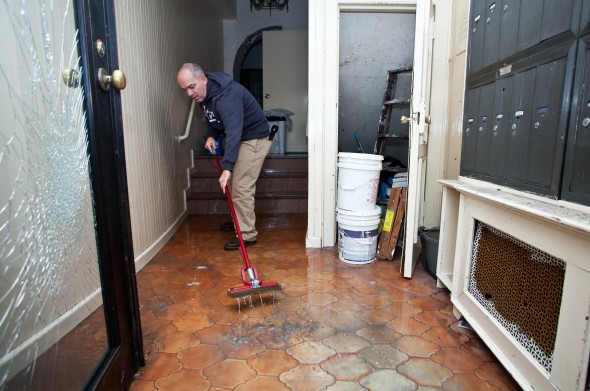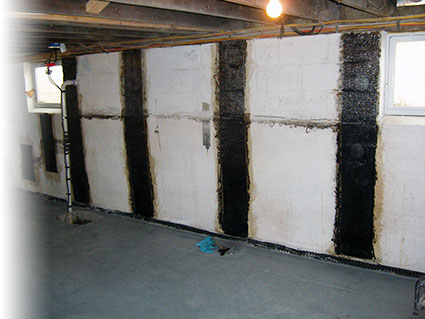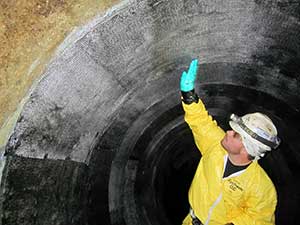Rebuilding and Reinforcing After Hurricane Sandy When Hurricane Sandy struck last month, it left a trail of destruction that will be remembered for years to come. The storm brought record flooding, widespread property damage, and tragic loss of life. Like many natural disasters before it, Sandy has changed the lives of countless people in the Northeast. Rebuilding is not just about restoring what was lost—it's about creating something stronger, more resilient, and better prepared for the future. The scale of the reconstruction effort is massive. Experts estimate that billions of dollars will be needed over the coming years to repair and rebuild infrastructure, homes, and communities. Tom Jeffery, chief hazard scientist at CoreLogic Inc., calls this period "the most adverse way you ever want to see positive growth." He notes that a large portion of the damaged properties will be repaired, but the real challenge lies in making sure these structures can withstand future storms. CoreLogic estimates that nearly 95,000 coastal properties, valued at around $40 billion, were affected by Sandy. These areas saw severe water intrusion, with levees breached, foundations undermined, and basements flooded. The damage isn’t just limited to homes—commercial buildings, transit systems, and critical infrastructure also need reinforcement. Saltwater from the storm is particularly damaging to steel components in buildings and underground systems. If not properly sealed and strengthened, it can lead to long-term structural issues. This is where HJ3 Civil composite systems come into play, offering durable solutions to prevent further damage and ensure lasting resilience. Efforts are also focused on upgrading New York City’s aging sewage system, which is vulnerable during heavy rains. A small amount of rainfall can cause combined sewer overflows (CSOs), leading to environmental and public health risks. HJ3’s CarbonSeal systems help reinforce underground pipes and manholes, preventing failures and ensuring safer, more reliable infrastructure. While the immediate losses from Sandy have been heartbreaking, especially in a country still recovering from a recent economic downturn, the spirit of the American people shines through in times of crisis. Communities are coming together, rebuilding with determination, and investing in a stronger, more resilient future. As we look ahead, the lessons learned from Sandy will shape how we build, plan, and protect our cities. It's a chance to create a more sustainable and disaster-ready environment for generations to come. Hmc Machine,Horizontal Machining Center,Horizontal Machining Center (HMC),4 axis Horizontal Machining Centers Dongguan Liyang Intelligent Technology Co., Ltd , https://www.leyomachine.com
Streets remain flooded after Hurricane Sandy on October 30, 2012 in Ocean City, New Jersey. (Mark Wilson/Getty Images)

This homeowner in New York's Lower East Side, cleans up after hurricane Sandy Oct. 31. (Amal Chen/The Epoch Times)

The Stronghold residential composite systems prevent walls from further bowing and confine cracks

HJ3's CarbonSeal systems structurally strengthen underground pipes and manholes preventing breaks or collapse
Horizontal Machining Centers are more suitable for processing large, heavy workpieces, complex curved workpieces, high-precision workpieces, mass-produced workpieces, difficult to machine material workpieces, multi variety, and small batch workpieces.
Horizontal Machining Centers are highly suitable for processing large and heavy workpieces due to the stability and load-bearing capacity of their bed structure. These workpieces usually have large dimensions and weights, and traditional machine tools are unable to withstand the forces and moments generated during their machining process. The horizontal machining center ensures the smoothness and accuracy of the machining process through its wide worktable and stable bed, thus meeting the high-precision machining needs of large and heavy workpieces. In addition, the horizontal machining center has multi axis linkage function, which can achieve complex surface machining. By equipping different tools and fixtures, various machining tasks from simple planes to complex surfaces can be completed. This makes horizontal machining centers have broad application prospects in fields such as aerospace, automotive manufacturing, and mold manufacturing. For example, in the aerospace field, horizontal machining centers can process various complex aircraft components; In the field of automobile manufacturing, horizontal machining centers can produce high-precision key components such as engine cylinder blocks and crankshafts.
The horizontal machining center adopts advanced numerical control system and precise transmission mechanism, which can achieve machining accuracy at the micrometer or even nanometer level, making it significantly advantageous in machining high-precision workpieces. For example, in the field of precision instrument manufacturing, horizontal machining centers can process high-precision optical components, precision molds, etc; In the field of semiconductor manufacturing, horizontal machining centers can complete high-precision cutting, grinding, and other processing tasks. In addition, horizontal machining centers have efficient and stable processing performance, making them very suitable for mass production. Through programming and configuration, horizontal machining centers can achieve automated processing and continuous production, greatly improving production efficiency and processing quality. In the mechanical manufacturing industry, many workpieces that require mass production can be processed using horizontal machining centers, such as automotive parts, bearings, gears, etc.
Horizontal machining centers also have unique advantages in processing difficult to machine materials. Difficult to process materials usually have high hardness, good toughness, and low thermal conductivity, and traditional processing methods are difficult to effectively process them. Horizontal machining centers can achieve efficient and precise machining of difficult to machine materials through the use of high-speed cutting, hard alloy cutting tools, and other technological means. For example, in the field of mold manufacturing, horizontal machining centers can process mold materials with high hardness and wear resistance; In the aerospace field, horizontal machining centers can process alloy materials that are resistant to high temperatures and corrosion. With the diversification and miniaturization of market demand, the production method of multiple varieties and small batches is increasingly valued. Horizontal machining centers are very suitable for this production method due to their strong cutting ability and excellent processing stability